AI-Assisted Character Art: Create Stunning Visuals Quickly
Unlocking the Potential of AI in Character Art Creation
Creating character art can feel like a monumental task, demanding both time and a high level of skill. But what if you could harness the power of artificial intelligence to not only speed up this process but also enhance your creativity and explore new artistic horizons? This article dives into the world of AI-generated character art, offering practical tips, discussing ethical considerations, and showcasing how AI can transform your art creation process.
The Role of AI in Character Art Generation
What is AI Character Art Generation?
AI character art generation uses advanced algorithms to craft visual representations of characters. These systems learn from vast collections of existing art, picking up on styles, features, and compositions. By providing specific prompts or reference images, artists can direct the AI to produce original character designs. These AI tools are constantly improving, providing more sophisticated ways to create unique and visually striking art. They’re not here to replace artists but to amplify their creative capabilities.
The beauty of AI in this context is its speed in generating multiple variations and iterations, which is perfect for exploring different design options and overcoming creative hurdles. However, it's crucial to remember that AI relies on its training data, which means that the true essence of originality and artistic intent still lies with the artist. Blending AI with traditional methods allows artists to fully leverage these innovative tools.
AI can be integrated at various stages of the art creation process, from conceptualization to final touches. Whether you're struggling with anatomy or looking to refine your style, AI can generate a base model that you can then personalize and enhance to fit your vision.
Benefits of Using AI for Character Art
- Speed and Efficiency: AI can produce character designs in a fraction of the time it takes a human artist, especially during the initial stages. This is a game-changer for projects with tight deadlines or when you need to explore multiple design options quickly.

- Inspiration and Overcoming Creative Blocks: AI can spark new ideas by generating unexpected designs. It's incredibly useful when you're stuck or looking for fresh perspectives on your characters.
- Accessibility for Non-Artists: AI tools open up character art creation to those without formal training. This democratization allows game developers, writers, and content creators to visualize their projects without needing to hire a professional artist.
- Exploring Diverse Styles and Variations: From realistic to anime-inspired, AI can generate character art in a wide range of styles, helping you find the perfect aesthetic for your project.
- Cost-Effectiveness: For indie developers and creators with limited budgets, AI tools can be a more affordable option compared to hiring a professional artist.
- Enhanced Productivity: By automating repetitive tasks, AI allows artists to focus more on the creative aspects like storytelling and emotional depth, boosting overall productivity and satisfaction.
- Reference Material Generation: AI can quickly create reference material for poses and proportions, which can be challenging to get right.
Ethical Considerations and Responsible AI Use
Copyright, Ownership, and Artistic Intent
As AI art generation grows in popularity, it's important to consider the ethical implications around copyright, ownership, and the artist's intent. The question of who owns AI-generated art is complex, given that these systems are trained on existing artworks. To navigate this, AI-generated art should be seen as transformative and original if the artist significantly modifies and adds their creative input.
Artistic intent is another key factor. AI should be a tool that complements human creativity, not a replacement. It's essential for artists to ensure their work reflects their unique style and vision, and to be transparent about using AI in their creative process.
Plagiarism is a significant concern. Artists should avoid using AI to directly copy or imitate the work of others, instead focusing on creating distinct designs. Transparency about the use of AI helps maintain trust and ethical standards in the art community.
Practical Techniques for AI Character Art
To successfully generate character art with AI, a mix of technical know-how, artistic knowledge, and creative experimentation is needed. Here are some practical techniques to help you create stunning visuals:
- Choosing the Right AI Tool: There are various AI art generators available, each with its strengths. For example, NovelAI excels in generating high-quality anime-style images.
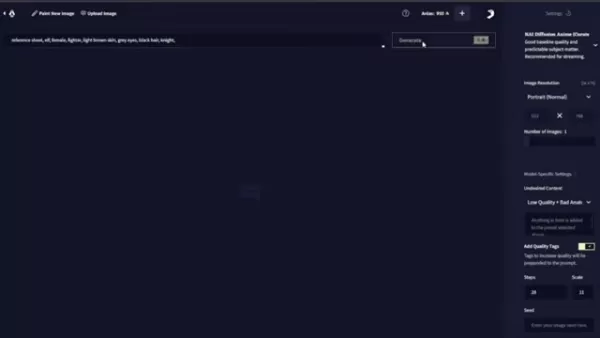
- Crafting Effective Prompts: The quality of your prompts can make a big difference. Be specific and descriptive, including details about the character's appearance, style, pose, and background. For instance, 'reference sheet, elf, female, fighter, light brown skin, grey eyes, black hair, knight, full body.'
- Using Reference Images: Reference images can guide the AI to produce art that aligns with your vision. You can upload images or link to relevant online sources.
- Iterating and Refining: AI-generated art often needs tweaking. Be ready to generate multiple variations and refine them using image editing software to fix any issues and add your creative touches.
- Combining AI with Traditional Art Skills: AI is a tool to enhance, not replace, traditional art skills. Use sketching, lining, and color choices to elevate the AI-generated art.
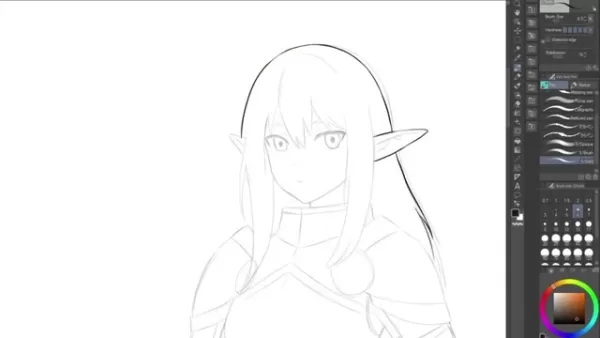
Mastering these techniques allows you to unlock the full potential of AI tools and create character art that truly showcases your artistic vision.
Step-by-Step Guide to Generating Character Art with AI
Initial Character Design and AI Prompt Creation
Start by defining your character's concept, including their race, gender, class, and background. Once you have a clear idea, choose an AI platform that suits your style. Then, craft a detailed prompt that covers appearance details, clothing, and pose. These prompts guide the AI in creating the initial design. 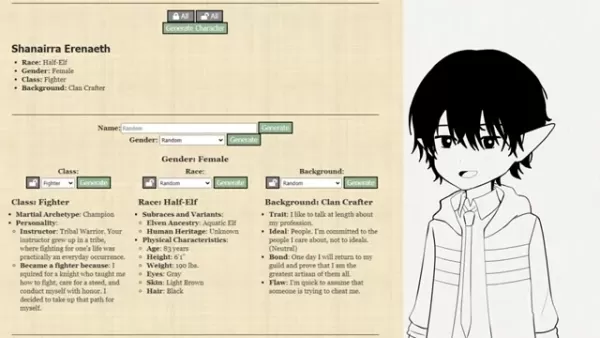
Generating and Refining AI Output
Use the AI generator to produce multiple image variations based on your prompt. Experiment with different settings and prompts to refine the design. Select the most promising image as a base for further work. 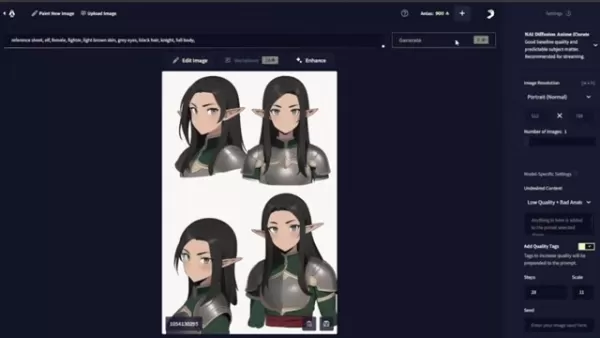
Enhancing AI Output with Traditional Art Techniques
Use the AI-generated art as a starting point. Sketch over it to adjust proportions and details, then add line art and paint over it. This process ensures that your personal artistic intent shines through.
Pros and Cons of AI Character Art
Pros
- Rapid creation of character concepts and variations.
- Accessibility for non-artists to generate visuals for their projects.
- Cost-effective option for indie developers and creators with limited budgets.
- Assists in overcoming creative blocks by providing new inspirations.
Cons
- Ethical concerns related to copyright, ownership, and plagiarism.
- Dependent on training data, which may limit originality without significant refinement.
- Potential for misuse, such as passing off AI-generated art as fully human-created.
- Risk of undermining the value and skills of professional artists.
FAQ
Is AI art truly original?
AI art raises questions about originality since it's based on existing datasets. While AI can generate new combinations, the styles and features are derived from its training data. Artists can enhance originality by using unique prompts and adding their creative input during the refinement process.
What are the legal implications of using AI-generated art?
Legal implications include concerns about copyright ownership and potential infringement. Current guidelines suggest that transformative AI art is considered original if significantly modified by the artist. It's crucial to avoid directly copying or imitating existing works and to be transparent about AI use.
Can AI replace artists?
AI is a tool to augment and enhance artistic abilities, not replace them. It's best used to handle repetitive tasks, explore variations, and overcome creative blocks. Human creativity and emotional depth remain essential for truly compelling character art.
Related Questions
How can AI enhance my D&D character designs?
The world of Dungeons and Dragons thrives on imagination, and AI can be a powerful tool to bring your characters to life visually. Here’s how to leverage AI for your D&D character art:
- Detailed Character Prompts: Craft prompts that are rich with detail about your character's physical appearance, history, personality, and world. The more specific you are, the better the AI can capture their essence.
- Class and Alignment: Specifying your character's class and alignment can influence the AI's output significantly. A 'lawful good paladin' will look different from a 'chaotic neutral rogue.'
- Weaponry and Armor: Include details about their gear, like 'a wizard with a crystal staff,' to get more interesting results.
- Reference Images: Use reference images to guide the AI towards specific armor designs, hairstyles, or facial features.
- Combine AI Outputs: Generate multiple images, pick the elements you like from each, and combine them using image editing software. This can lead to a truly unique result.
By using AI in this way, you’re not just creating a visual; you’re building a visual story. AI becomes an extension of your imagination, helping you explore possibilities and bring your characters to life in ways you might not have thought possible otherwise.
Related article
 Seeking Faith and Purpose in an Age of Skepticism
In our modern age of scientific inquiry and critical thinking, maintaining spiritual faith often feels like walking against the tide. Many struggle to reconcile timeless beliefs with contemporary skepticism, leaving them longing for deeper meaning. T
Seeking Faith and Purpose in an Age of Skepticism
In our modern age of scientific inquiry and critical thinking, maintaining spiritual faith often feels like walking against the tide. Many struggle to reconcile timeless beliefs with contemporary skepticism, leaving them longing for deeper meaning. T
 How ChatGPT Works: Capabilities, Applications, and Future Implications
The rapid evolution of artificial intelligence is transforming digital interactions and communication. Leading this transformation is ChatGPT, an advanced conversational AI that sets new standards for natural language processing. This in-depth examin
How ChatGPT Works: Capabilities, Applications, and Future Implications
The rapid evolution of artificial intelligence is transforming digital interactions and communication. Leading this transformation is ChatGPT, an advanced conversational AI that sets new standards for natural language processing. This in-depth examin
 Salesforce’s Transformer Model Guide: AI Text Summarization Explained
In an era where information overload is the norm, AI-powered text summarization has become an indispensable tool for extracting key insights from lengthy documents. This comprehensive guide examines Salesforce's groundbreaking AI summarization techno
Comments (11)
0/200
Salesforce’s Transformer Model Guide: AI Text Summarization Explained
In an era where information overload is the norm, AI-powered text summarization has become an indispensable tool for extracting key insights from lengthy documents. This comprehensive guide examines Salesforce's groundbreaking AI summarization techno
Comments (11)
0/200
![BruceWilson]() BruceWilson
BruceWilson
 August 7, 2025 at 10:00:59 PM EDT
August 7, 2025 at 10:00:59 PM EDT
This AI art tool sounds like a game-changer! 😍 I’m no artist, but I’m tempted to try creating some epic characters now. How accurate are the details it generates, though?


 0
0
![AlbertKing]() AlbertKing
AlbertKing
 May 2, 2025 at 12:32:11 PM EDT
May 2, 2025 at 12:32:11 PM EDT
Nghệ thuật nhân vật hỗ trợ bởi AI thật sự là một bước đột phá! Trước đây tôi phải mất nhiều giờ để thiết kế nhân vật, nhưng bây giờ thì nhanh chóng và kết quả thật sự ấn tượng! Đôi khi AI có thể hơi điên rồ, nhưng đó cũng là phần vui của nó, phải không? 🎨


 0
0
![RaymondAllen]() RaymondAllen
RaymondAllen
 May 2, 2025 at 7:33:52 AM EDT
May 2, 2025 at 7:33:52 AM EDT
Wow, AI making character art faster is wild! 😮 I tried it and got a dope cyberpunk character in minutes. Kinda makes me wonder if artists will lean on this too much, though.


 0
0
![StevenMartínez]() StevenMartínez
StevenMartínez
 May 1, 2025 at 3:54:44 PM EDT
May 1, 2025 at 3:54:44 PM EDT
Créer des visuels avec l’IA, c’est impressionnant ! 😍 J’adore l’idée, mais je me demande si ça va standardiser les styles à long terme.


 0
0
Unlocking the Potential of AI in Character Art Creation
Creating character art can feel like a monumental task, demanding both time and a high level of skill. But what if you could harness the power of artificial intelligence to not only speed up this process but also enhance your creativity and explore new artistic horizons? This article dives into the world of AI-generated character art, offering practical tips, discussing ethical considerations, and showcasing how AI can transform your art creation process.
The Role of AI in Character Art Generation
What is AI Character Art Generation?
AI character art generation uses advanced algorithms to craft visual representations of characters. These systems learn from vast collections of existing art, picking up on styles, features, and compositions. By providing specific prompts or reference images, artists can direct the AI to produce original character designs. These AI tools are constantly improving, providing more sophisticated ways to create unique and visually striking art. They’re not here to replace artists but to amplify their creative capabilities.
The beauty of AI in this context is its speed in generating multiple variations and iterations, which is perfect for exploring different design options and overcoming creative hurdles. However, it's crucial to remember that AI relies on its training data, which means that the true essence of originality and artistic intent still lies with the artist. Blending AI with traditional methods allows artists to fully leverage these innovative tools.
AI can be integrated at various stages of the art creation process, from conceptualization to final touches. Whether you're struggling with anatomy or looking to refine your style, AI can generate a base model that you can then personalize and enhance to fit your vision.
Benefits of Using AI for Character Art
- Speed and Efficiency: AI can produce character designs in a fraction of the time it takes a human artist, especially during the initial stages. This is a game-changer for projects with tight deadlines or when you need to explore multiple design options quickly.

- Inspiration and Overcoming Creative Blocks: AI can spark new ideas by generating unexpected designs. It's incredibly useful when you're stuck or looking for fresh perspectives on your characters.
- Accessibility for Non-Artists: AI tools open up character art creation to those without formal training. This democratization allows game developers, writers, and content creators to visualize their projects without needing to hire a professional artist.
- Exploring Diverse Styles and Variations: From realistic to anime-inspired, AI can generate character art in a wide range of styles, helping you find the perfect aesthetic for your project.
- Cost-Effectiveness: For indie developers and creators with limited budgets, AI tools can be a more affordable option compared to hiring a professional artist.
- Enhanced Productivity: By automating repetitive tasks, AI allows artists to focus more on the creative aspects like storytelling and emotional depth, boosting overall productivity and satisfaction.
- Reference Material Generation: AI can quickly create reference material for poses and proportions, which can be challenging to get right.
Ethical Considerations and Responsible AI Use
Copyright, Ownership, and Artistic Intent
As AI art generation grows in popularity, it's important to consider the ethical implications around copyright, ownership, and the artist's intent. The question of who owns AI-generated art is complex, given that these systems are trained on existing artworks. To navigate this, AI-generated art should be seen as transformative and original if the artist significantly modifies and adds their creative input.
Artistic intent is another key factor. AI should be a tool that complements human creativity, not a replacement. It's essential for artists to ensure their work reflects their unique style and vision, and to be transparent about using AI in their creative process.
Plagiarism is a significant concern. Artists should avoid using AI to directly copy or imitate the work of others, instead focusing on creating distinct designs. Transparency about the use of AI helps maintain trust and ethical standards in the art community.
Practical Techniques for AI Character Art
To successfully generate character art with AI, a mix of technical know-how, artistic knowledge, and creative experimentation is needed. Here are some practical techniques to help you create stunning visuals:
- Choosing the Right AI Tool: There are various AI art generators available, each with its strengths. For example, NovelAI excels in generating high-quality anime-style images.

- Crafting Effective Prompts: The quality of your prompts can make a big difference. Be specific and descriptive, including details about the character's appearance, style, pose, and background. For instance, 'reference sheet, elf, female, fighter, light brown skin, grey eyes, black hair, knight, full body.'
- Using Reference Images: Reference images can guide the AI to produce art that aligns with your vision. You can upload images or link to relevant online sources.
- Iterating and Refining: AI-generated art often needs tweaking. Be ready to generate multiple variations and refine them using image editing software to fix any issues and add your creative touches.
- Combining AI with Traditional Art Skills: AI is a tool to enhance, not replace, traditional art skills. Use sketching, lining, and color choices to elevate the AI-generated art.

Mastering these techniques allows you to unlock the full potential of AI tools and create character art that truly showcases your artistic vision.
Step-by-Step Guide to Generating Character Art with AI
Initial Character Design and AI Prompt Creation
Start by defining your character's concept, including their race, gender, class, and background. Once you have a clear idea, choose an AI platform that suits your style. Then, craft a detailed prompt that covers appearance details, clothing, and pose. These prompts guide the AI in creating the initial design. 
Generating and Refining AI Output
Use the AI generator to produce multiple image variations based on your prompt. Experiment with different settings and prompts to refine the design. Select the most promising image as a base for further work. 
Enhancing AI Output with Traditional Art Techniques
Use the AI-generated art as a starting point. Sketch over it to adjust proportions and details, then add line art and paint over it. This process ensures that your personal artistic intent shines through.
Pros and Cons of AI Character Art
Pros
- Rapid creation of character concepts and variations.
- Accessibility for non-artists to generate visuals for their projects.
- Cost-effective option for indie developers and creators with limited budgets.
- Assists in overcoming creative blocks by providing new inspirations.
Cons
- Ethical concerns related to copyright, ownership, and plagiarism.
- Dependent on training data, which may limit originality without significant refinement.
- Potential for misuse, such as passing off AI-generated art as fully human-created.
- Risk of undermining the value and skills of professional artists.
FAQ
Is AI art truly original?
AI art raises questions about originality since it's based on existing datasets. While AI can generate new combinations, the styles and features are derived from its training data. Artists can enhance originality by using unique prompts and adding their creative input during the refinement process.
What are the legal implications of using AI-generated art?
Legal implications include concerns about copyright ownership and potential infringement. Current guidelines suggest that transformative AI art is considered original if significantly modified by the artist. It's crucial to avoid directly copying or imitating existing works and to be transparent about AI use.
Can AI replace artists?
AI is a tool to augment and enhance artistic abilities, not replace them. It's best used to handle repetitive tasks, explore variations, and overcome creative blocks. Human creativity and emotional depth remain essential for truly compelling character art.
Related Questions
How can AI enhance my D&D character designs?
The world of Dungeons and Dragons thrives on imagination, and AI can be a powerful tool to bring your characters to life visually. Here’s how to leverage AI for your D&D character art:
- Detailed Character Prompts: Craft prompts that are rich with detail about your character's physical appearance, history, personality, and world. The more specific you are, the better the AI can capture their essence.
- Class and Alignment: Specifying your character's class and alignment can influence the AI's output significantly. A 'lawful good paladin' will look different from a 'chaotic neutral rogue.'
- Weaponry and Armor: Include details about their gear, like 'a wizard with a crystal staff,' to get more interesting results.
- Reference Images: Use reference images to guide the AI towards specific armor designs, hairstyles, or facial features.
- Combine AI Outputs: Generate multiple images, pick the elements you like from each, and combine them using image editing software. This can lead to a truly unique result.
By using AI in this way, you’re not just creating a visual; you’re building a visual story. AI becomes an extension of your imagination, helping you explore possibilities and bring your characters to life in ways you might not have thought possible otherwise.
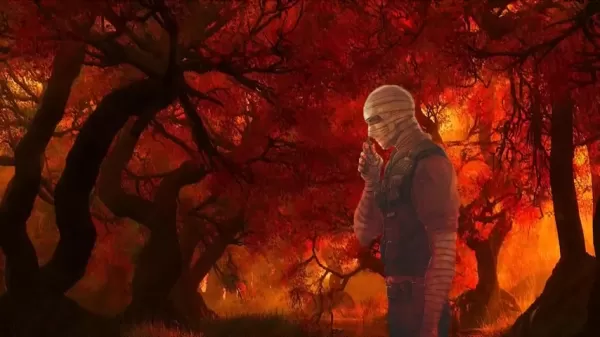 Seeking Faith and Purpose in an Age of Skepticism
In our modern age of scientific inquiry and critical thinking, maintaining spiritual faith often feels like walking against the tide. Many struggle to reconcile timeless beliefs with contemporary skepticism, leaving them longing for deeper meaning. T
Seeking Faith and Purpose in an Age of Skepticism
In our modern age of scientific inquiry and critical thinking, maintaining spiritual faith often feels like walking against the tide. Many struggle to reconcile timeless beliefs with contemporary skepticism, leaving them longing for deeper meaning. T
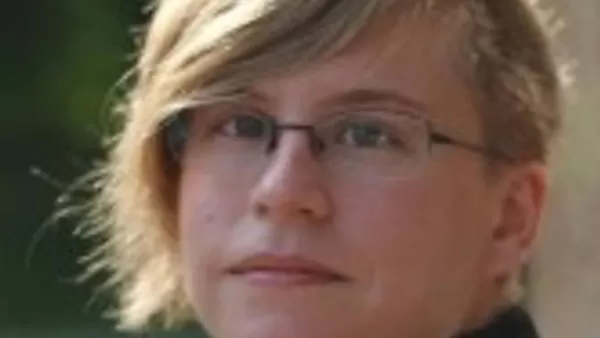 How ChatGPT Works: Capabilities, Applications, and Future Implications
The rapid evolution of artificial intelligence is transforming digital interactions and communication. Leading this transformation is ChatGPT, an advanced conversational AI that sets new standards for natural language processing. This in-depth examin
How ChatGPT Works: Capabilities, Applications, and Future Implications
The rapid evolution of artificial intelligence is transforming digital interactions and communication. Leading this transformation is ChatGPT, an advanced conversational AI that sets new standards for natural language processing. This in-depth examin
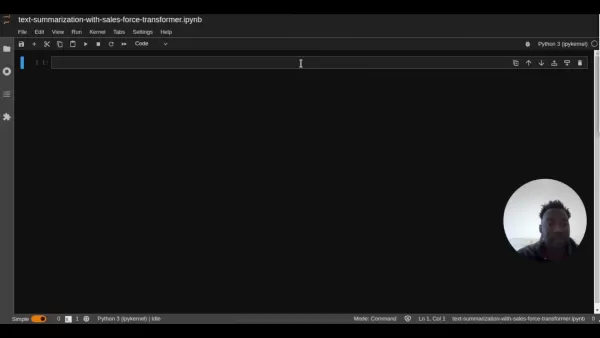 Salesforce’s Transformer Model Guide: AI Text Summarization Explained
In an era where information overload is the norm, AI-powered text summarization has become an indispensable tool for extracting key insights from lengthy documents. This comprehensive guide examines Salesforce's groundbreaking AI summarization techno
Salesforce’s Transformer Model Guide: AI Text Summarization Explained
In an era where information overload is the norm, AI-powered text summarization has become an indispensable tool for extracting key insights from lengthy documents. This comprehensive guide examines Salesforce's groundbreaking AI summarization techno
 August 7, 2025 at 10:00:59 PM EDT
August 7, 2025 at 10:00:59 PM EDT
This AI art tool sounds like a game-changer! 😍 I’m no artist, but I’m tempted to try creating some epic characters now. How accurate are the details it generates, though?


 0
0
 May 2, 2025 at 12:32:11 PM EDT
May 2, 2025 at 12:32:11 PM EDT
Nghệ thuật nhân vật hỗ trợ bởi AI thật sự là một bước đột phá! Trước đây tôi phải mất nhiều giờ để thiết kế nhân vật, nhưng bây giờ thì nhanh chóng và kết quả thật sự ấn tượng! Đôi khi AI có thể hơi điên rồ, nhưng đó cũng là phần vui của nó, phải không? 🎨


 0
0
 May 2, 2025 at 7:33:52 AM EDT
May 2, 2025 at 7:33:52 AM EDT
Wow, AI making character art faster is wild! 😮 I tried it and got a dope cyberpunk character in minutes. Kinda makes me wonder if artists will lean on this too much, though.


 0
0
 May 1, 2025 at 3:54:44 PM EDT
May 1, 2025 at 3:54:44 PM EDT
Créer des visuels avec l’IA, c’est impressionnant ! 😍 J’adore l’idée, mais je me demande si ça va standardiser les styles à long terme.


 0
0





























